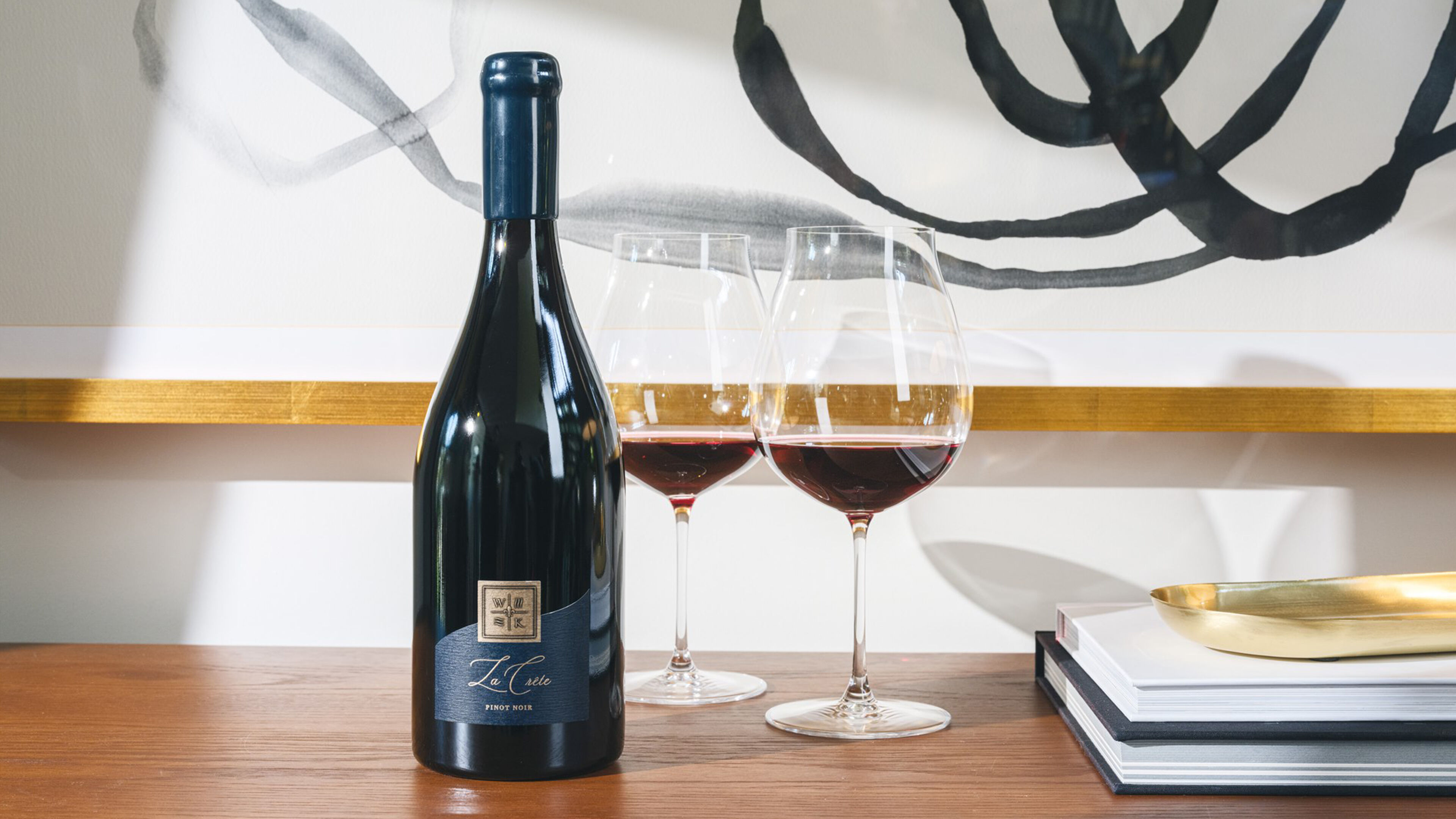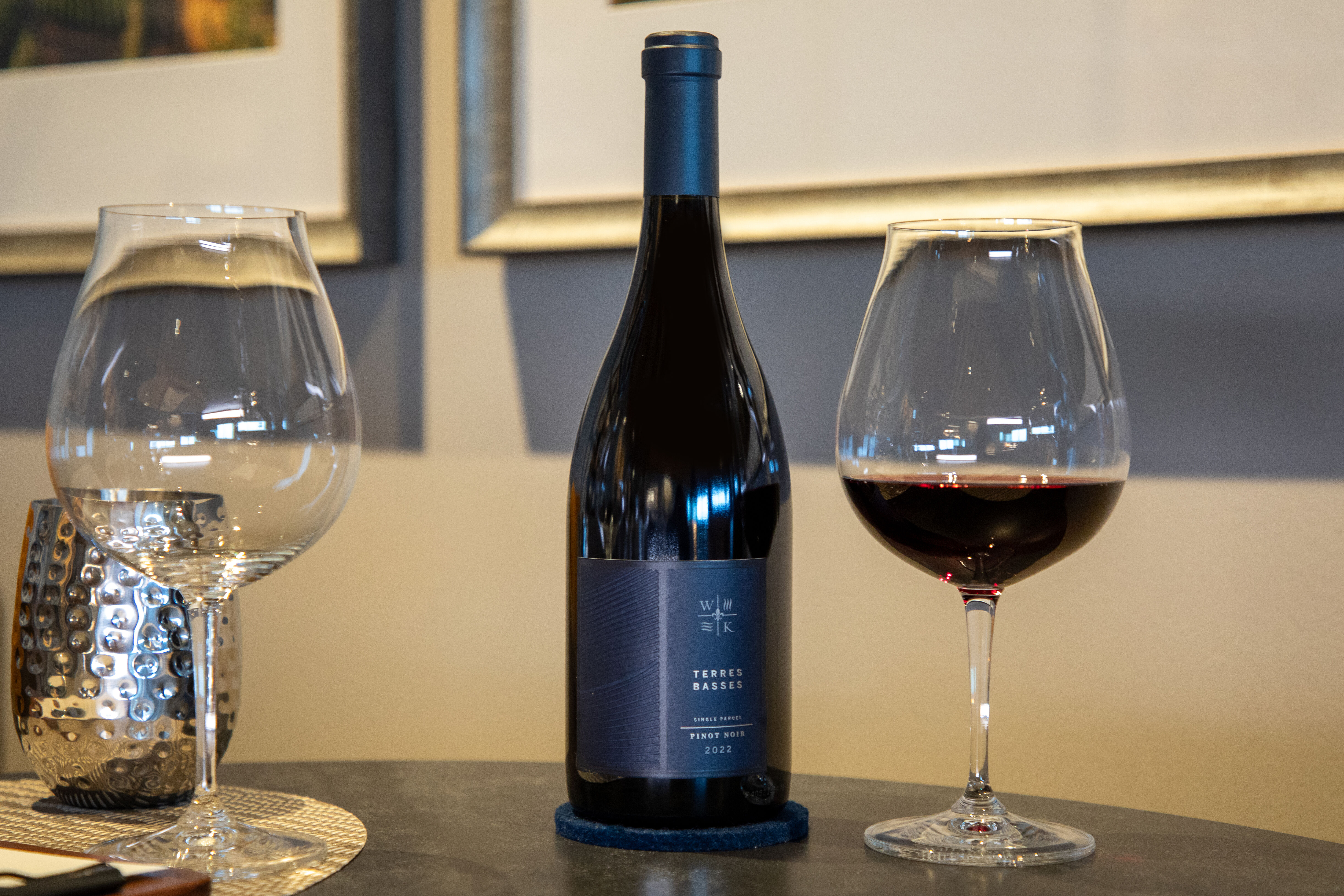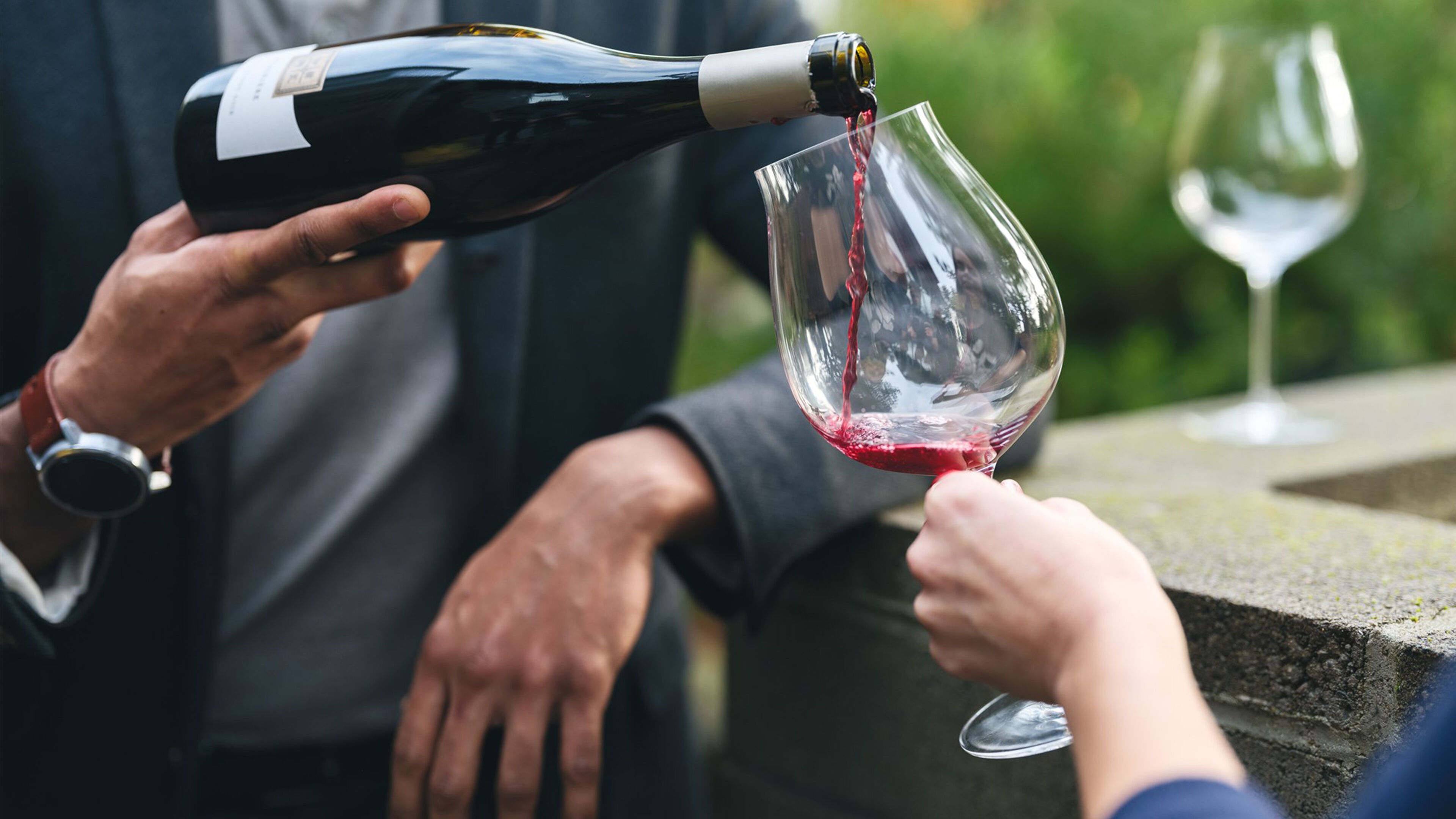Categories
Five Tips for Opening and Enjoying Aged Wines
You’ve patiently waited to open that special bottle, and now the moment has arrived. Uncorking a high-quality, aged wine promises a sensorial feast of complex aromas, flavors, and textures—beautifully balanced and lingering on the palate. Just as proper cellaring is essential for preserving a mature wine’s integrity, the way you open and serve it is crucial to unlocking and experiencing the intricate layers of flavors and aromas that have developed over time. Enjoy these five tips from the WillaKenzie Estate team on how to expertly uncork and serve an older wine.

1. Stand it Upright
Before uncorking your bottle of aged wine, stand it upright in a cool, dark space for several hours, or up to two days. This will allow any sediment to settle at the bottom, ensuring a clearer pour.
2. Uncork with Care
The Ah-So, with its two prongs, and the more expensive Durand, which combines a helix corkscrew with two prongs, are ideal for extracting older, more fragile corks. Use the Ah-So with a side-to-side motion, and the Durand by first inserting the helix and next the prongs until the two pieces lock together, before twisting and removing the cork. If the cork breaks, don’t panic! Try to remove it with a corkscrew at a 45-degree angle or, if that fails, push the cork into the bottle and filter the wine through a cheesecloth directly into the glass to prevent rapid oxidization.

3. Don’t Decant (At Least, Not Right Away)
After uncorking your aged wine, let it sit without decanting for several hours. While decanting often improves the enjoyment of young, tannic wines, it can disrupt the fragile aromas and flavors of an aged wine by exposing it to a rush of oxygen. If after tasting, you do choose to decant, pour the wine slowly into a decanter, stopping before sediment reaches the bottle's mouth, and limit decanting to 30 minutes.
4. Serve at the Optimal Temperature
Older wines are more sensitive to temperature. Aim to serve mature red wines at about 56°F and older white wines around 50-55°F. Use a thermometer to ensure you have the right temperature, as serving an aged wine that is too warm can emphasize the alcohol over its delicate characteristics, while serving it too cold can prevent it from releasing its intricate aromas and flavors.
5. Savor the Evolution
The main reason wines get better with age is that they layer additional aromas, flavors, and textures over time. The primary ripe fruit and floral characteristics evolve into tertiary earthy, dried fruit, savory, and perfumed notes, while the tannins and acidity also mellow. Only a very small percentage of wines have the intrinsic qualities needed for aging, so take time to savor the remarkable gem in your hands that rewards the passage of time. Swirl the wine gently in your glass, inhale its bouquet deeply, and take small sips, allowing the wine to linger on your palate and reveal its complexity.
Many WillaKenzie Estate wines benefit from additional years of cellaring. We suggest purchasing several bottles of the same vintage and opening them at different intervals to savor the wine’s evolution over time.
Three of our top picks for cellaring are:
No matter which wines you choose to cellar and eventually enjoy, we hope these tips enhance your experience!




